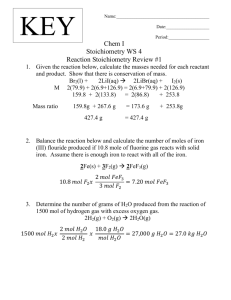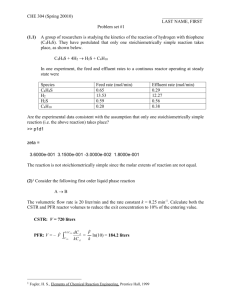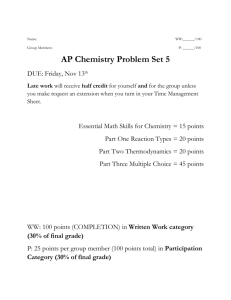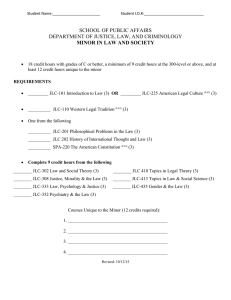Document 13490126
advertisement
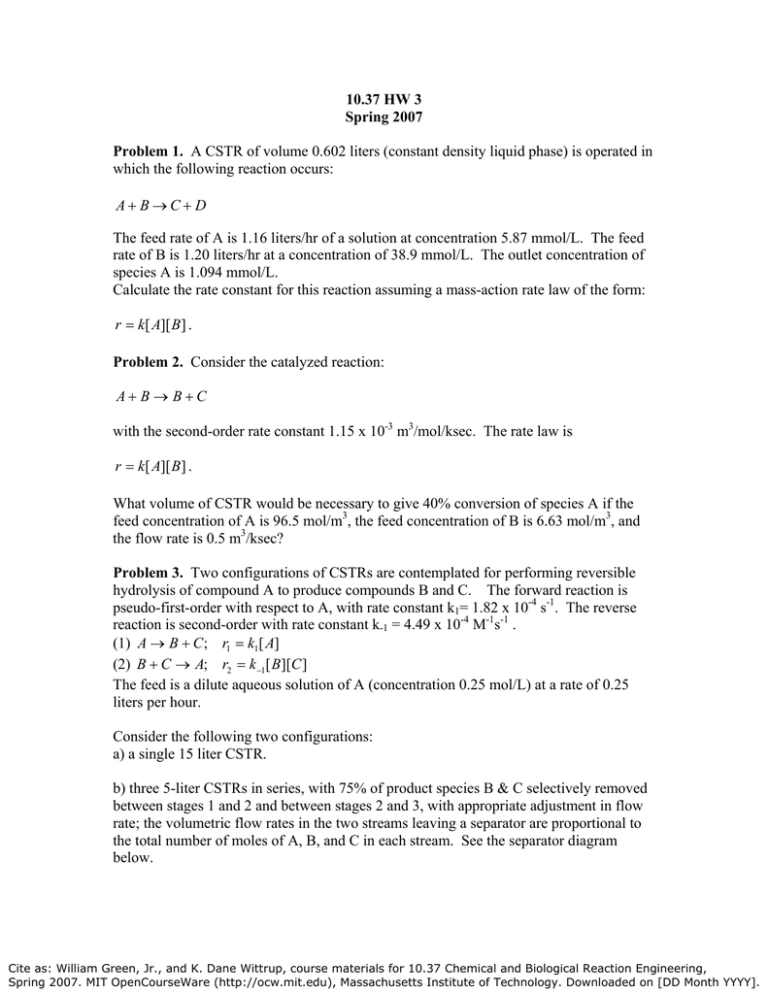
10.37 HW 3 Spring 2007 Problem 1. A CSTR of volume 0.602 liters (constant density liquid phase) is operated in which the following reaction occurs: A+ B→C+ D The feed rate of A is 1.16 liters/hr of a solution at concentration 5.87 mmol/L. The feed rate of B is 1.20 liters/hr at a concentration of 38.9 mmol/L. The outlet concentration of species A is 1.094 mmol/L. Calculate the rate constant for this reaction assuming a mass-action rate law of the form: r = k[ A][B] . Problem 2. Consider the catalyzed reaction: A+ B → B+C with the second-order rate constant 1.15 x 10-3 m3/mol/ksec. The rate law is r = k[ A][B] . What volume of CSTR would be necessary to give 40% conversion of species A if the feed concentration of A is 96.5 mol/m3, the feed concentration of B is 6.63 mol/m3, and the flow rate is 0.5 m3/ksec? Problem 3. Two configurations of CSTRs are contemplated for performing reversible hydrolysis of compound A to produce compounds B and C. The forward reaction is pseudo-first-order with respect to A, with rate constant k1= 1.82 x 10-4 s-1. The reverse reaction is second-order with rate constant k-1 = 4.49 x 10-4 M-1s-1 . (1) A → B + C; r1 = k1[ A] (2) B + C → A; r2 = k −1[B][C] The feed is a dilute aqueous solution of A (concentration 0.25 mol/L) at a rate of 0.25 liters per hour. Consider the following two configurations: a) a single 15 liter CSTR. b) three 5-liter CSTRs in series, with 75% of product species B & C selectively removed between stages 1 and 2 and between stages 2 and 3, with appropriate adjustment in flow rate; the volumetric flow rates in the two streams leaving a separator are proportional to the total number of moles of A, B, and C in each stream. See the separator diagram below. Cite as: William Green, Jr., and K. Dane Wittrup, course materials for 10.37 Chemical and Biological Reaction Engineering, Spring 2007. MIT OpenCourseWare (http://ocw.mit.edu), Massachusetts Institute of Technology. Downloaded on [DD Month YYYY]. q0 FA0 FB0 FC0 q1 FA1 FB1 FC1 Separator q2 FA2 FB2 FC2 If q is the volumetric flow rate and F is the molar flow rate, then the separator follows the relationships: FA2 = 0 FB 2 = 0.75 FB0 FC 2 = 0.75FC 0 F + FB1 + FC1 q1 = A1 q2 FA2 + FB2 + FC 2 A full flow diagram is shown below. Determine the steady-state production of compound B in mol/h for options a) and b). Cite as: William Green, Jr., and K. Dane Wittrup, course materials for 10.37 Chemical and Biological Reaction Engineering, Spring 2007. MIT OpenCourseWare (http://ocw.mit.edu), Massachusetts Institute of Technology. Downloaded on [DD Month YYYY].


